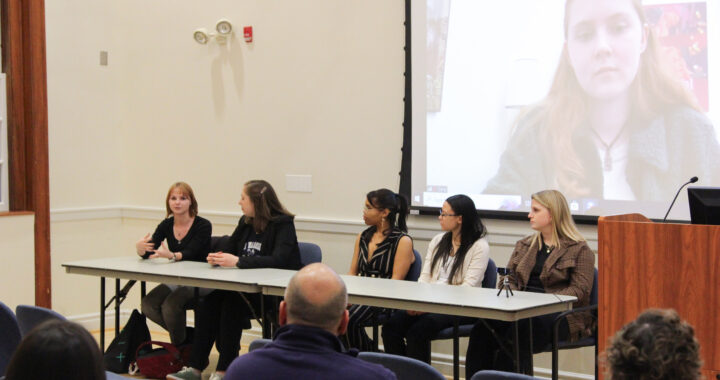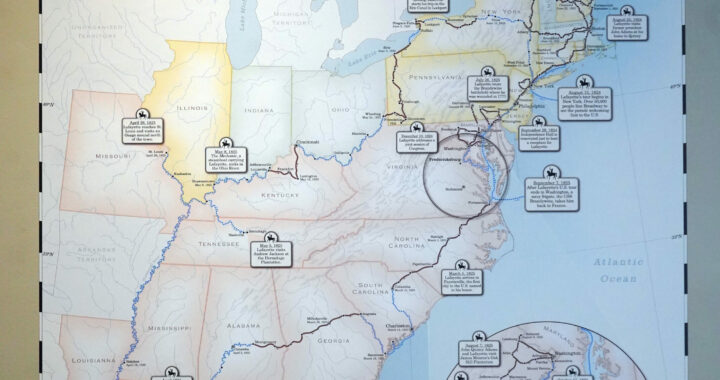Brick by Brick, Eagle Village Climbs, Adding One Floor Every Three Weeks
3 min read
By DAVID TINDELL
Eagle Village apartments are showing visible progress since Phase I construction began in February 2009.
Between February and August 2009, a total of 78,000 square feet (1.8 acres) of the former Park-N-Shop retail space was demolished to make way for the 569,000 bricks that will be included in UMW’s Eagle Village. For students, Eagle Village has been a two-year promise for new housing opportunities.
“We definitely need more apartments,” junior Elizabeth Emmel said.
The UMW Foundation, a non-profit organization tax-exempted for educational purposes, is funding Eagle Village. The UMW Foundation began planning construction of Phase I in March 2009, according to the UMW website.
Since then, concrete foundation has been poured for mixed-building use and construction of the north and south towers are underway. Student housing stairwells and elevator shafts are nearing completion, and underground plumbing and conduit are being prepared.
“They have built a floor every 21 days, and seem to be meeting that goal,” Chris Porter, director of Residence Life, said. “Their speed is surprising.”
Eagle Village will cover 454,456 square feet (10.4 acres) of residential and mixed-use space. It will include 760,000 square feet of drywall and 654 new data outlets on a fiber optic network.
Additionally, Eagle Village supports 318 water-saving toilets; four elevators; two trash compactors; and two recycling compactors.
In outward appearance, the UMW Foundation said that Eagle Village will maintain UMW’s Jeffersonian brick and column architecture. On the inside Eagle Village apartments offer more than most current residential buildings.
The two 5-story buildings will hold 624 students and will be constructed in a ‘U’ shape. The building itself will be fronted by a two-story rotunda and a garden matched with café tables and small fountains.
Two rooms will be equipped with a bathroom, and will share a full kitchen, complete with an eat-in bar and ceramic stove tops.
Other amenities include the laundry rooms on every floor, meeting rooms, a social area on top of a rotunda, a 24-hour concierge desk and a resident manager.
Chris Porter also mentions other benefits of living in the Village Apartments: a 12-month lease, a gated car garage only for Village residents and air conditioning.
Students will have free access to fireplaces, big screen TVs, pool tables and wireless internet throughout the area. However, there are still a few aspects of Eagle Village life that have yet to be resolved, according to Porter.
“One plan which needs to be ironed out is premium parking for these residents, what types of meal plans are required, etc.,” Porter said.
The UMW Foundation originally purchased the 21-acre property for almost $18.8 million in December 2007, and plans to invest a total of $115 million into Phase I. This money will cover construction costs, land acquisition and the development of the seven-acre Eagle Village.
According to the UMW Foundation, no student, university or state funds are being expended. Rather, the project is privately funded through a combination of finance and an equity through Bank of America.
Only upperclassmen will be able to reside in these apartments. Even still, alumnus Tom Roberts (‘09) has doubts about its effect on campus life.
“It’s exciting to see this new development, [and it] definitely will be good for the community [and] economy,” Roberts said. “However, I wonder how it will affect campus social gatherings, [being] separated from UMW by Route 1.”
Eagle Village is not scheduled to be open until August of 2010. Although this timeline is very strict, the UMW Foundation has prepared alternate scenarios with plans for Phase II to begin in the near future, though construction may be years off.
“February is known as the ‘Drop Dead’ date,” Porter said. “They have to tell me if it is a no-go or not. If it is a no-go, it will be just like normal housing selection. If it is a go, then we will begin to sign students up.”
“If it is a go, but something terrible happens, [if] it snows every day…a back-up plan will hinge on forgoing the Randolph/Mason renovations,” Porter added.











